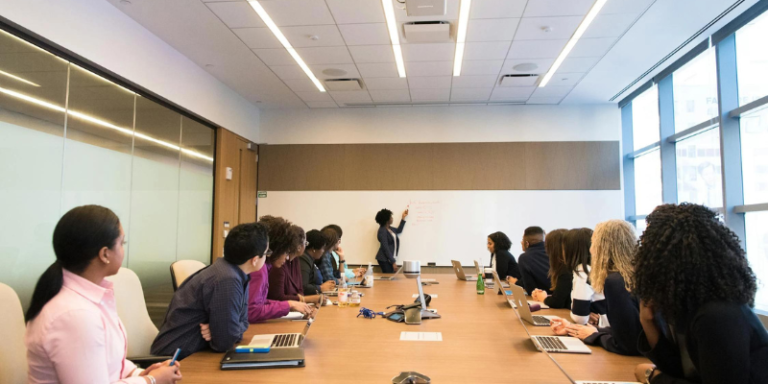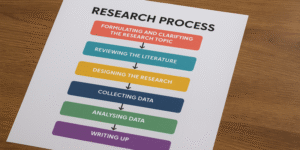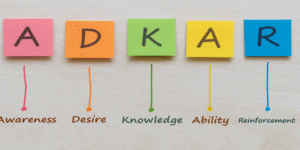In today’s fast-paced professional environments, meetings remain one of the most vital tools for collaboration, communication, and decision-making. However, poorly managed meetings can lead to wasted time, reduced engagement, and unclear outcomes. Research indicates that ineffective meetings contribute to lost productivity and decreased employee satisfaction (Barrett, 2014). Therefore, conducting meetings effectively requires careful preparation, strong facilitation, clear decision-making, and structured follow-up. This essay discusses the principles and practices for conducting effective workplace meetings, supported by academic literature, professional communication theories, and real-world examples.
1.0 Preparation
The foundation of a successful meeting is thorough preparation. According to Barrett (2014), effective meetings begin long before participants enter the room. The organiser must define the purpose, prepare a clear agenda, invite the right participants, and ensure all materials are ready.
Define the Purpose
The first step in planning a meeting is to clarify its purpose. Meetings can serve various objectives such as decision-making, brainstorming, status updates, or problem-solving. Without a clear objective, meetings often drift aimlessly, wasting valuable time. For instance, a project team meeting should specify whether its purpose is to review progress, allocate resources, or address specific challenges. Barrett (2014) emphasises that defining the purpose ensures that all participants understand the desired outcome, enabling them to prepare meaningfully.
Create an Agenda
A well-structured agenda acts as the roadmap for a productive meeting. It outlines key topics, allocates time for each, and sets expectations for discussion. Distributing the agenda beforehand allows participants to prepare their input and review necessary materials. Froemling (2017) suggests that clear agendas reduce ambiguity and keep discussions focused. For example, an agenda for a weekly operations meeting may include items such as performance updates, key challenges, and planning for the upcoming week. Using time allocations for each item helps maintain focus and prevents discussions from overrunning.
Invite the Right People
Inviting relevant participants is critical to maintaining efficiency. Meetings should include individuals whose input is essential for decision-making or who are directly affected by the outcomes. Over-inviting can lead to unnecessary discussions, while under-inviting risks missing crucial perspectives (Smith, 2019). For example, a strategic planning meeting should include department heads and decision-makers rather than all employees.
Prepare Materials
To support effective discussions, organisers must gather and distribute relevant documents such as reports, data analyses, or presentations in advance. This allows attendees to come prepared with insights and questions. According to Barrett (2014), pre-distribution of materials not only saves time during the meeting but also encourages a more informed and analytical dialogue.
2.0 Facilitation
Once preparation is complete, the focus shifts to facilitating the meeting effectively. This involves managing time, guiding discussion, and ensuring participation from all attendees.
Start on Time
Starting promptly signals professionalism and respect for participants’ time. Meetings that consistently begin late often foster disengagement and inefficiency (Smith, 2019). Setting a clear start time and adhering to it encourages punctuality and accountability.
Set Ground Rules
Establishing ground rules early in the meeting helps maintain order and mutual respect. Common rules include avoiding interruptions, staying on topic, and limiting the use of mobile devices. Bales (1953) notes that successful group interactions require clear expectations to balance participation and maintain equilibrium within teams.
Stick to the Agenda
It is easy for discussions to deviate from their intended focus. Effective facilitators use polite but firm redirection techniques to keep the meeting on track. For example, a chairperson might say, “That’s a valuable point, but let’s return to it at the end if time allows.” Staying focused ensures that objectives are met within the designated timeframe.
Encourage Participation
Meetings thrive when all voices are heard. Facilitators should create an environment where participants feel comfortable contributing their ideas. Smith (2019) argues that inclusive meetings promote better problem-solving and innovation. Techniques such as round-robin sharing, brainstorming, and direct questioning can help draw input from quieter members. For instance, in brainstorming sessions, setting a rule that “no idea is a bad idea” encourages creativity without fear of judgement.
Manage Time
Time management is crucial to maintaining momentum. Assigning a timekeeper or using visual cues such as timers helps prevent prolonged discussions. Froemling (2017) highlights that meetings that respect time limits enhance participant satisfaction and productivity. Ending discussions promptly also leaves time for summarising and clarifying decisions.
Summarise Key Points
Throughout the meeting, facilitators should periodically summarise discussions, highlight decisions, and confirm understanding. This helps reinforce key points and ensures alignment. A concise summary at the end outlining action items and next steps helps prevent confusion or miscommunication after the meeting.
3.0 Decision-Making
A key function of many meetings is reaching decisions that move projects and organisations forward. This requires a balance between structure and open discussion.
Facilitate Consensus
Building consensus ensures that decisions are widely supported and sustainable. Bales (1953) suggests that group cohesion improves when members feel their input has been acknowledged. For example, in a departmental meeting discussing a new policy, allowing each stakeholder to voice their perspective fosters ownership of the final decision.
Use Structured Decision-Making Methods
Structured methods like SWOT analysis, brainstorming, or pros-and-cons evaluation can enhance clarity and prevent bias. These frameworks help participants consider all angles before reaching conclusions. Barrett (2014) argues that structured decision-making reduces conflict and promotes rational, evidence-based outcomes. For example, when evaluating new software for a company, using a SWOT analysis enables teams to assess strengths, weaknesses, opportunities, and threats systematically.
4.0 Follow-Up
The final stage of an effective meeting is follow-up. Many well-run meetings fail to have an impact because action steps are not clearly communicated or tracked.
Document Meeting Minutes
Recording accurate meeting minutes ensures accountability and clarity. Minutes should include key decisions, assigned responsibilities, deadlines, and any resources required (Smith, 2019). Distributing them promptly reinforces understanding and helps track progress. For instance, project managers often use shared documents or digital tools like Microsoft Teams or Trello to monitor action items collaboratively.
Assign Action Items
Every decision made in a meeting should translate into clear, actionable tasks. Assigning specific individuals to tasks ensures ownership and accountability. As Barrett (2014) advises, vague statements such as “someone should look into this” should be replaced with precise directives, such as “John will draft the proposal by next Friday.”
Evaluate Effectiveness
Continuous improvement is a hallmark of effective meeting culture. After each meeting, leaders should evaluate its effectiveness by reflecting on what went well and what could be improved. Soliciting feedback through brief surveys or informal discussions encourages transparency and helps refine future meetings (Smith, 2019). For instance, if participants frequently note that meetings overrun, organisers can implement stricter time management protocols.
Conducting effective meetings in the workplace is both an art and a science—requiring careful preparation, skilful facilitation, structured decision-making, and disciplined follow-up. Defining a clear purpose, creating a detailed agenda, and inviting the right participants set the groundwork for success. During facilitation, maintaining focus, encouraging participation, and managing time effectively ensure productive outcomes. Finally, documenting key points, assigning actions, and evaluating performance sustain accountability and improvement. When these principles are consistently applied, meetings become collaborative spaces for innovation, clarity, and organisational progress, rather than mere routine obligations. As Barrett (2014) aptly notes, “An effective meeting is not one that ends on time—it’s one that achieves its purpose.”
References
Bales, R. F. (1953) ‘The equilibrium problem in small groups’, in Parsons, T., Bales, R. F. and Shils, E. A. (eds.) Working Papers in the Theory of Action. New York: Free Press, pp. 111–161.
Barrett, N. (2014) Effective Meetings: Improving Group Decision Making. London: Kogan Page Publishers.
Froemling, K. (2017) The Elements of Public Speaking. London: Routledge.
Smith, R. A. (2019) The Art of Facilitation: The Essentials for Leading Great Meetings and Creating Group Synergy. Chichester: Wiley.









